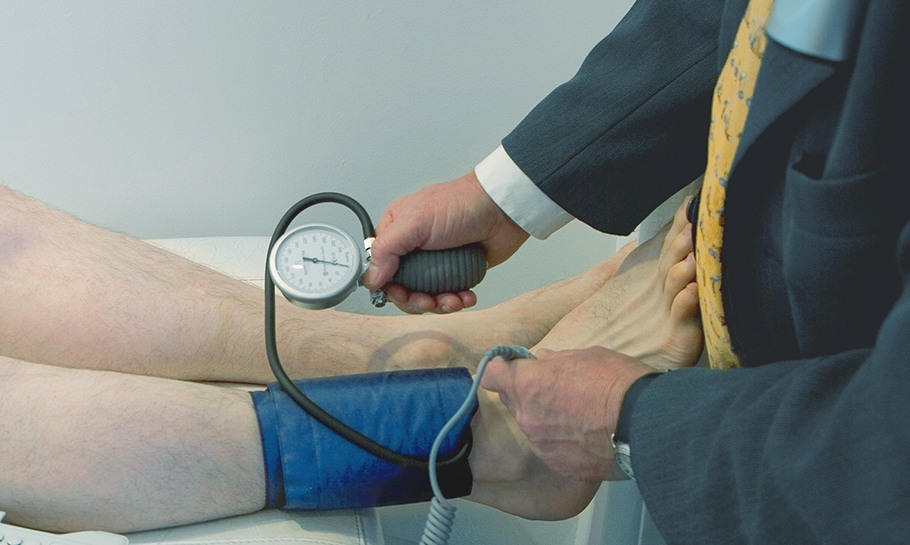Vascular Disease

Peripheral Arterial Disease
Peripheral Arterial Disease occurs when there's a narrowing of the blood vessels outside of your heart. This happens when plaque, a substance made up of fat and cholesterol, builds up on the walls of the arteries that supply blood to the arms and legs. This plaque causes arteries to narrow or become blocked. This can reduce or stop blood flow, usually to the legs, causing pain or numbness. If severe enough, blocked blood flow can cause tissue death. If left untreated, a foot or leg may need to be amputated.
Symptoms
- Pain, weakness, numbness or cramping in muscles due to decreased blood flow
- Sores, wounds or ulcers that heal slowly or not at all
- Noticeable change in color (blueness or paleness)
- Noticeable change in temperature (coolness) when compared to the other limb
- Diminished hair and nail growth
Carotid Artery Disease
The carotid arteries are the vessels in the neck providing blood to the brain. You can feel their pulse under the jawline. Should these vessels become narrowed or blocked due to plaque buildup of plaque, you may have carotid artery disease. The plaque may slowly block or narrow the carotid artery or cause a clot to form more suddenly. Clots can lead to stroke.
Recognizing the symptoms
You may not have any symptoms of carotid artery disease. Rather, you may have symptoms of a stroke or a mini-stroke. Some of these symptoms include:
- Blurred vision
- Confusion
- Loss of memory
- Loss of sensation
- Problems with speech and language
- Vision loss
- Weakness in one part of your body
Any of these symptoms is considered an emergency, so it’s important to call 911 immediately. Although a mini-stroke might only last a few minutes, it is an early warning that a major stroke may happen. More than a third of the people who’ve suffereda mini-stroke will later have a stroke.